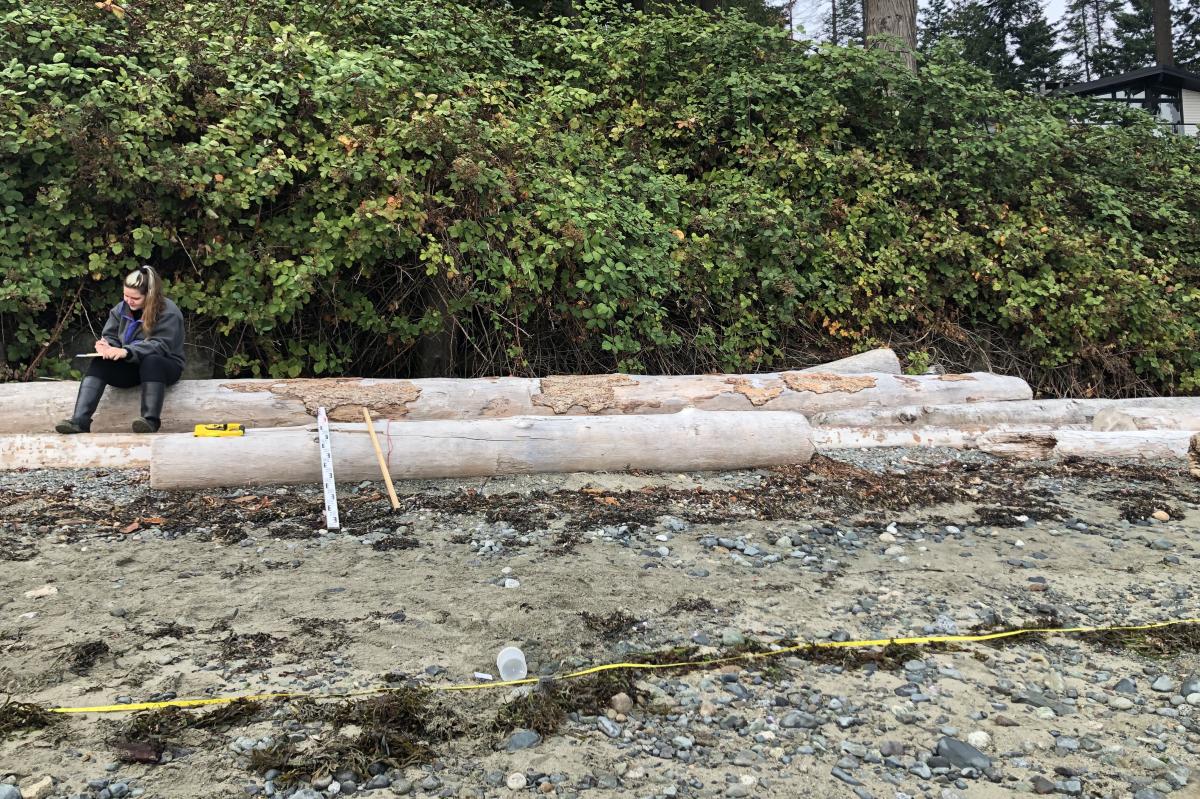
I’m a new employee on the MABRRI team, working on the fish forage project! Forage fish lay their nearly microscopic eggs in the sand. Therefore, being part of the project has diverted my thinking to focus on the small and important creatures in food chains that can pretty easily be overlooked. Now when I go to beaches, I think a lot about the sand under my feet. On October 1st, myself and another student were taught how to conduct sampling for forage fish eggs. Sampling has to be done at low tide so that the substrate we’re sampling is exposed and not underwater. It was a beautiful morning, and I was happy to be out on Morningside beach, which I didn’t even know existed! We were walked through all the procedures: beach elevation, tidal height, beach composition, assessment, mapping, and sampling methods.
Once we gather the samples, they need to be processed. This process includes separating the sediment sizes we want from the cobble and silt using sieves, which is then further reduced using a method called the vortex method. This method stirs up the sand and separates the lighter, biological materials (hopefully eggs) from the heavier inert materials. Once we’re done, a 4L sample is reduced to an amount of sand that fits in a mason jar.
Typically, the analysis of the samples would take place in the MABRRI office. However, during the Covid-19 pandemic we take the samples home to analyze under the microscope. This is where things get fun – sand looks REALLY cool under a microscope. No two particles are the same, and they all vary in shape and colour. In the samples I’ve looked at, I’ve found tons of worms, pieces of what look like fish vertebrae, and even a microfossil of a teeny tiny snail. Every scoop of sand holds different treasures within it. No eggs yet, but I’m hopeful for some later in the season!
Working around the pandemic has definitely been something to get used to. It has its positives and negatives. I’m glad that I still get to see my coworkers in person and participate in field work. Having the microscope at home means I can look at samples whenever I want whether it’s in between classes or at ungodly hours of the night (in my PJ’s which is a bonus…). Organising emails and time management have been tricky, but I’m getting there. Overall, it’s been a great experience and I’m looking forward to doing more field work, and hopefully finding some eggs!
